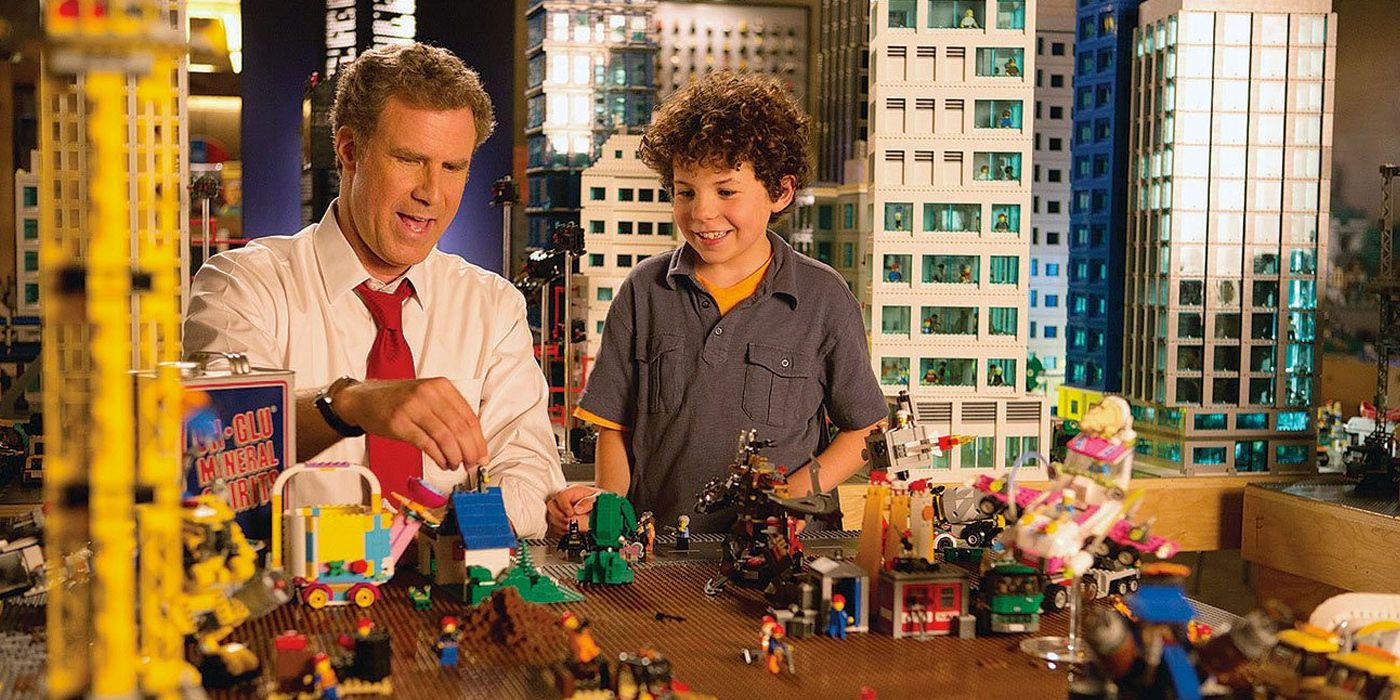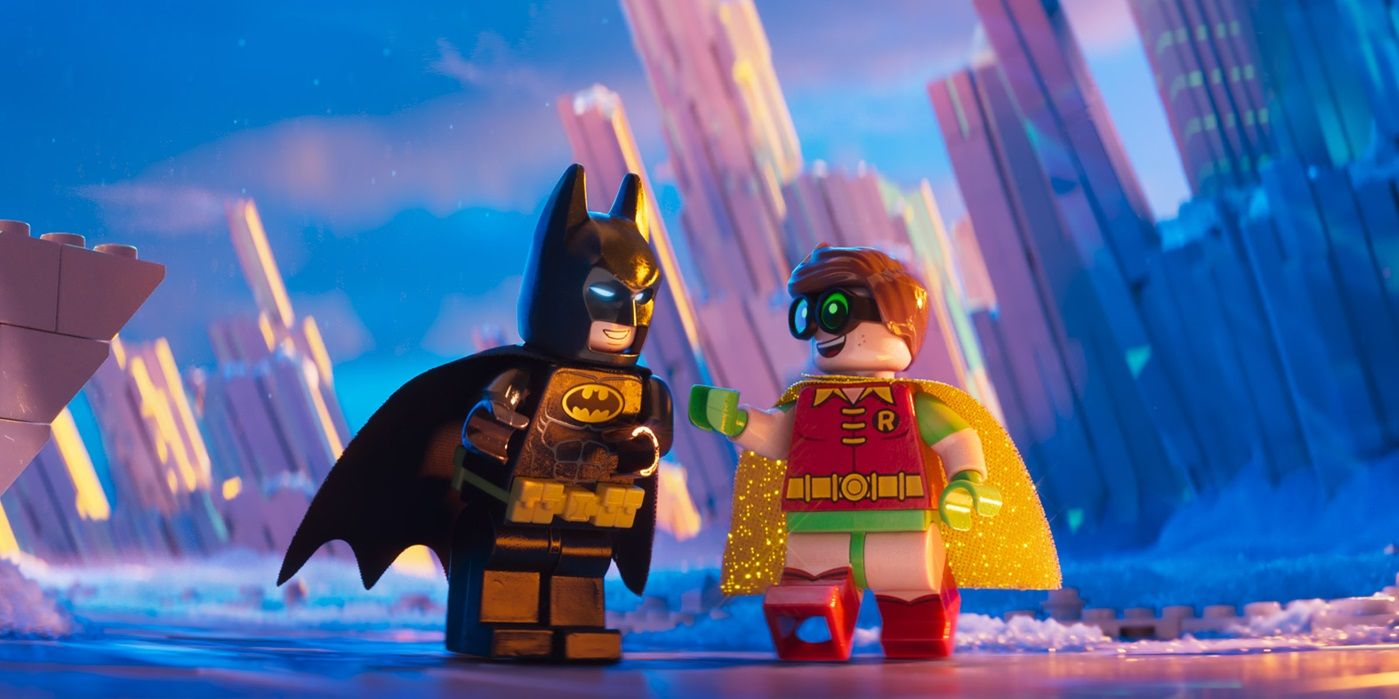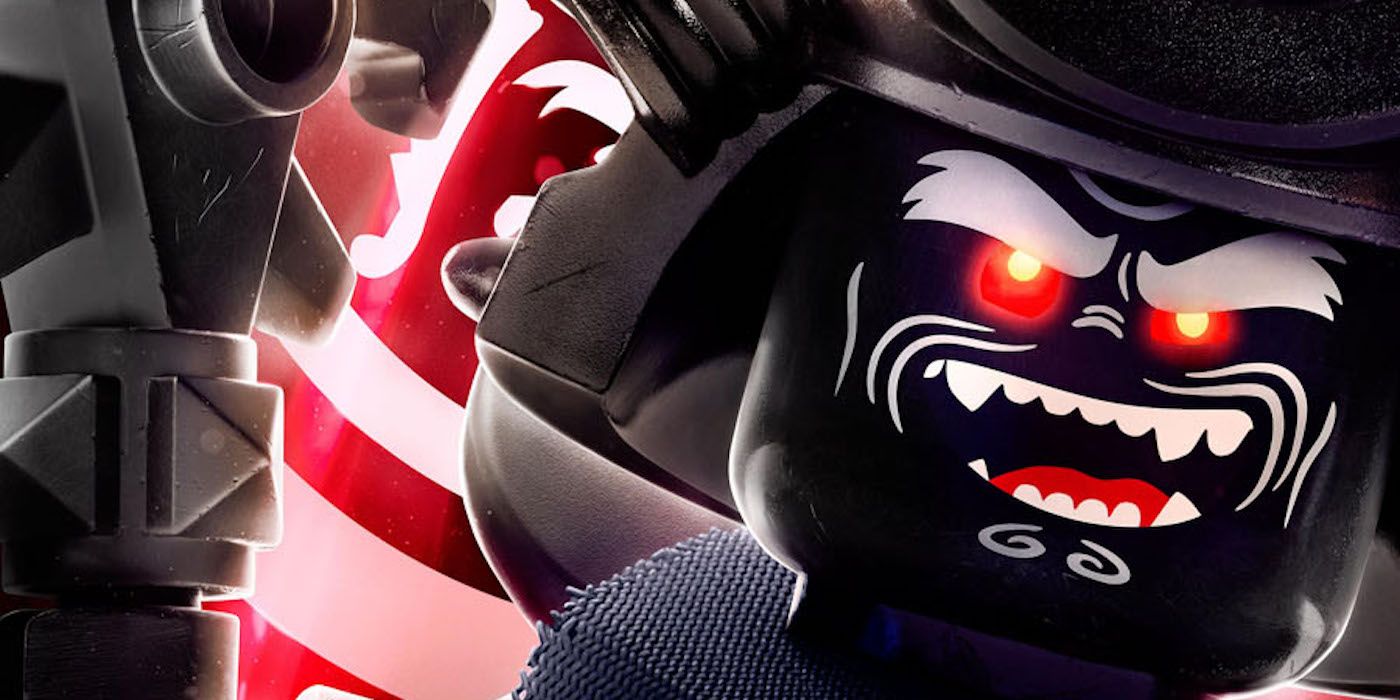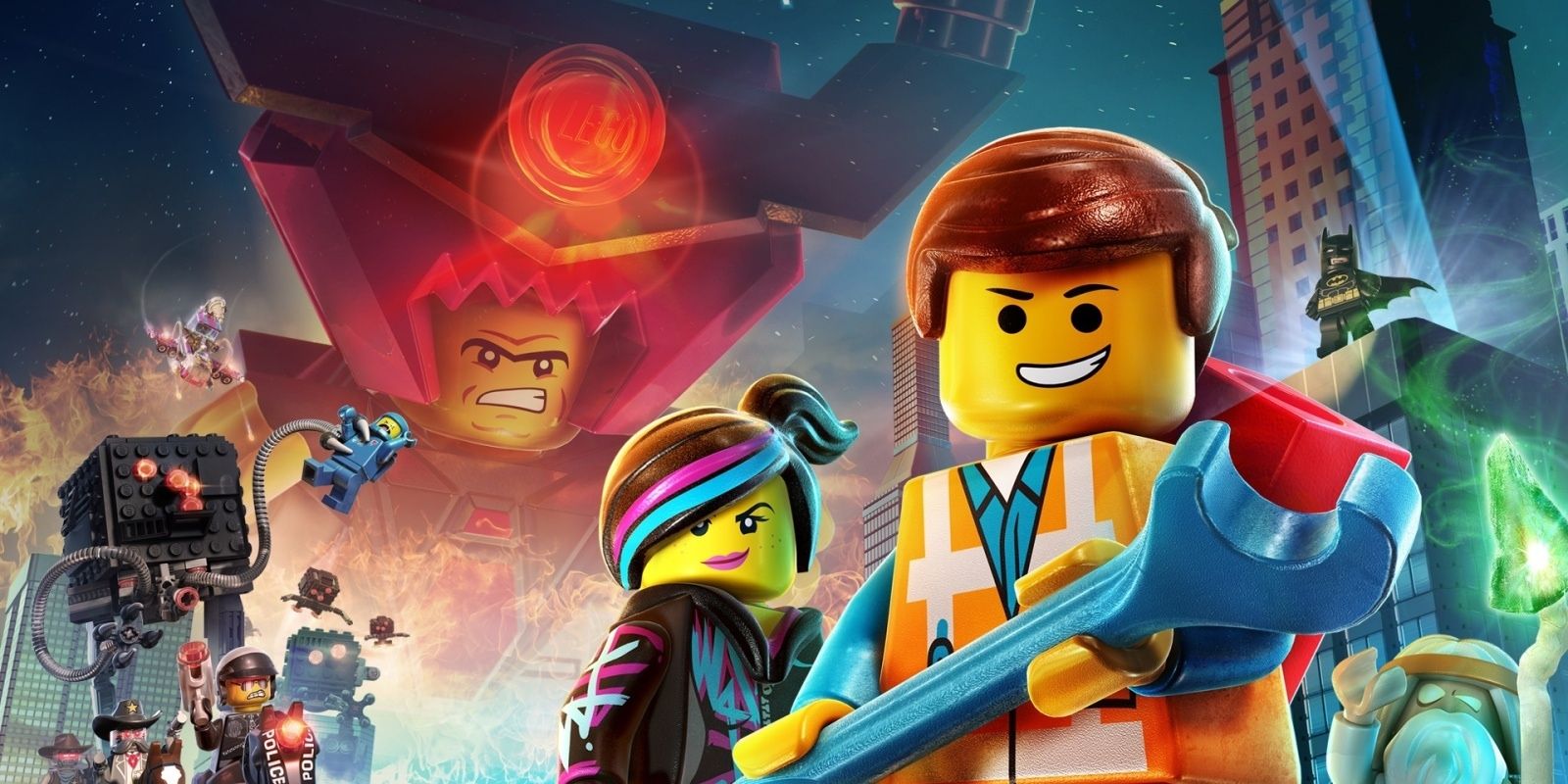The LEGO Movie wowed critics back in 2014 with its clever stop-motion-mimicking animation, visually dazzling design scheme and insightful satire of summer-blockbuster "hero's journey" cliches; but the biggest surprise of all was the slowly-emerging twist that the entire story had actually been taking place in a sprawling LEGO display in a basement somewhere in the "real" world (and/or the imagination of the small boy playing with it). Even then, the film had one more surprise within the twist itself: poignancy. It's ultimately revealed that the main characters' quest (to stop the evil President Business from freezing the LEGO Universe solid) was a dramatization of the boy's frustrated relationship with his father (Will Ferrell) - who crazy-glues his LEGO together and forbids anyone else from playing with them.
It was a particularly masterful twist, serving as both a reinforcement of the LEGO brand-identity as a creativity-focused family toy, and also as a legitimately moving emotional denouement once Ferrell's unnamed dad character finally takes notice of his son's potent creativity and realizes who "President Business" is supposed to be. Granted, the film's storytelling and visual panache were probably strong enough that it still would've been a hit otherwise, but hitting even those who didn't have some kind of nostalgic connection to the famous toy brand square in "the feels" absolutely helped elevate The LEGO Movie from box office hit to full-blown cultural phenomenon. Given that sort of success, it's not entirely surprising that four follow-ups (and counting!) were greenlit in its immediate aftermath.
The first of those follow-ups (only one of which has been slated as a direct sequel), The LEGO Batman Movie, aimed to repeat a version of that multi-layered surprise depth on its own end. The main plot involved a scheme by The Joker to import an army of LEGO villains from other Warner Bros.-owned properties to conquer Gotham City, while the emotional core of the narrative centered on Will Arnett's Batman (who affects a brutal parody of the post-1980s "dark loner" version of the character) learning that he needs family in his life after all - chiefly by being a better surrogate father to his adopted son Robin.
Looking for ideological "patterns" and recurring themes is one of the main obvious ways in which audiences looking to form a deeper understanding of art and entertainment do so. It's the basis of most schools of art-critique, most relevantly the "auteur model" that represents the standard of film criticism ever since it was first suggested in the pages of Cahiers du Cinema over a half-century ago: Recurring visual motifs, stylistic choices and narrative themes form the basis of a filmmaker's "signature" across multiple seemingly-unrelated works. It also happens to be how most people generally process information through extrapolation and deductive reasoning - look for how often something happens in order to intuit how likely it is to happen again, and follow the patterns to determined their source.
Where that model potentially breaks down, however, is that there are more hands steering the filmmaking process than ever. The LEGO films deliberately affect a small, hand-made stylistic aesthetic and quirky sense of humor, but they're nonetheless multi-million dollar studio investments. They "star" characters drawn from popular licensed brands reimagined through a design-scheme that is itself the "brand" of the world's most powerful toy company (worth over $14.6 billion). While it's possible that one or two highly-placed voices in the development of the LEGO film franchise has some specific familial concerns that can't help but manifest in the work - it's also not that likely.
The LEGO Ninjago Movie arrived in theaters last week, and it's a first for the franchise in that it represents the LEGO Movie formula of using the comedy inherent in characters being self-aware that they and their universe exist as interchangeable plastic bricks, but otherwise treading by now familiar ground. There's another unsure-of-himself hero, another quest to stop a LEGO city from being destroyed by sinister forces, another magical macguffin that's (hilariously) revealed to be a common item somehow imported from the "real world" and - yes - another main narrative through-line that's ultimately all about a boy struggling with Bad Dad Problems.
Father-son relationships were perhaps inevitably going to be a core theme of LEGO Ninjago. The film is a lampshade-hanging "funny version" of a mythos that was already established on the long-running Ninjago: Masters of Spinjitsu Cartoon Network series, where the plot point of Green Ninja "Lloyd" being the son of supervillain Lord Garmadon was established as far back as season 2. It's also not a direct parallel to Bad Dad stories of previous LEGO films, where father-son conflicts were the "serious parts" of otherwise humor-driven films. In LEGO Ninjago, Lloyd and Garmadon's interplay shuffling back and forth between genre-standard Luke vs. Vader action-angst and more ordinary "deadbeat dad" gripes is the film's main comedic conceit (a major battle sequence comes to an abrupt halt when Garmadon unknowingly mocks "Green Ninja" for not knowing how to catch a ball - something of a sore spot for Lloyd).
But joke or not, it's not long before LEGO Ninjago is sprinting toward the same now-familiar pathos. We eventually get a succession of heart-to-hearts as Lloyd gets to vent his frustrations at growing up under his father's shadow (another running joke of the film is that Lloyd's parentage is known to everyone in Ninjago City, but this is regarded as a reason to mock and bully him rather than something to be feared) and Garmadon gets to explain the inevitably mundane reasons behind his absentee-parenthood. If you've seen the previous two films, you probably have a rough idea of how this angle eventually plays out for all involved.
On the other hand, another problem with ascribing some unifying meaning to the LEGO franchise's fondness for Bad Dad narratives (or any other repeating element, for that matter) is that "originality" doesn't exactly have a premium spot in the mission-statement. These are films firmly entrenched in "remix culture," deliberately built around evoking both specific pop-culture references and broad modern-mythology tropes that the audience is expected to recognize in order to deconstruct them or evoke familiar feelings - even Ninjago, despite not having the likes of Batman or The Millenium Falcon pop in for a sight-gag, is riffing on the plot from the earlier Ninjago TV series and the familial beats of the anime and kung-fu genres.
Indeed, one of the reasons that The LEGO Movie's surprise real-world framing narrative specifically gut-punched Gen-X film critics and grownup LEGO fans of similar age was that it evoked the tone of similar sequences from classic films of their own youth like The Neverending Story or The Princess Bride ("But wait, in this scenario I'm now th- ...oh.") LEGO Batman's coy conflation of the hero/archvillain relationship as something like a feuding couple is relatively fresh, but it didn't so much "invent" the idea of Robin as surrogate son (and necessary component to the Bat-mythos) as it did revive it as a longstanding feature of the franchise. And, of course, Lloyd and Garmadon's entire setup for Ninjago owes a lot to Star Wars - there's even a whole scene built around Lloyd losing an arm.
In the end, that's probably the bigger picture of the issue itself. There's no real mystery to why "Boys working out their issues with dad" would be so prevalent in this particular series of films. Men make up a disproportionate majority of the creative voices involved in their making, so it's likely that they'd be inclined to tell stories that reflect their own experiences. But that's hardly a charge that can be laid especially strongly at the doorstep of LEGO, specifically. In fact, the Danish company widely promotes itself as one of the toy industry's nominal "progressive" voices, originally advertising their products with specifically cross-gender appeal (they only began developing the "female-centric" LEGO Friends line after extensive research and consultation on the subject) and famously maintaining a ban on what would likely be highly-profitable modern-military themed toys.
More than any other modern movie property, the LEGO franchise reflects the whole of the film industry, and more broadly the culture in which all such entities exist. That LEGO seems to be stuck on a single perspective on a single type of relationship is unfortunate (and likely to become more so if the repetition continues) but it's also not LEGO-exclusive issue. Hollywood has long been a business run mostly by men that prioritized men's stories in general and, especially over the last two decades, one specific type of men i.e. "middle-class" men between 14 and 40 weaned on diets of cartoons, comics and other pop-culture ephemera.
While it would be somewhat unreasonable to "expect" that this might begin to change with the LEGO franchise, that might indeed end up being the case: The LEGO Movie ends with a stinger about the boy hero having to accept that he'll have to learn to share space, too - with his younger sister and her DUPLO creations. As it turns out, The Lego Movie Sequel actually aims to make that the jumping-off point for the entire next adventure; which producer Chris McKay says will focus on "subconscious biases" about "What's different and similar about gender, when a boy plays vs. how a girl plays?" If this remains the case, and the material is explored with the same finesse and depth as its predecessor; it could indeed be a beginning of the LEGO movies taking their own advice and building a new identity - rather than just following Hollywood's instructions.




